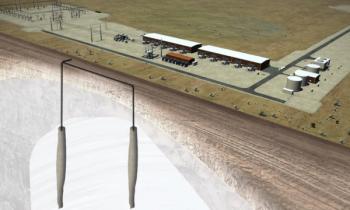
Geared for growth
Gears are big business. Research firm Frost & Sullivan tagged its revenues at $12.8 billion in
2013.
By 2017, that number is predicted to rise to $15.67 billion, spurred in part by continued gearbox innovation in wind power. Graham Mackrell, MD of Harmonic Drive, noted the main gear types.
A spur gear is a disk with teeth projecting radially. Spur gears are cheap and easy to install. They offer power transmission efficiency and a constant velocity ratio, and can transmit power up to 50,000kW. “Generally these gears have backlash (transverse movement) and although they can be fitted with backlash compensation, accuracy is not maintained without adjustment,” said Mackrell. “Spur gears can be noisy and can occupy a large footprint especially in high ratios.”
A bevel gear can be considered in the same family as a spur/helical gear and can also be straight or helical cut. This right-angled gear can help in applications where space is at a premium. So called due to its earthworm-like movement, the worm drive consists of two parts: the screw-shaped worm gear and the larger spur-shaped worm wheel.
Perpendicular to the axis of rotation, the worm gear is compact and a large single-stage gear reduction can be achieved. Larger ratios suffer from low efficiency. Its design allows a hollow shaft to be bored into the central cylinder of the worm wheel for cables and services. By increasing the pressure on the surfaces in contact, backlash can be reduced. However, higher pressure increases wear on teeth, reducing efficiency; and adjustment is often necessary to maintain accuracy.
Epicyclic or planetary gears have three to five gears rotating like planets around a central sun gear, surrounded by an outer annular ring gear. They provide a high power density, over 95% efficiency and are compact. Accuracy can be high, with minimal backlash. By combining several gear stages, high reduction ratios can be achieved (max single stage ratio of 10:1). Planetary gears are generally more expensive than helical gears and can require more maintenance.
A strainwave gear has the highest power density and accuracy, consisting of an outer circular spline (a fixed ring with gear teeth on the inside) meshed to a flexible ring with gear teeth on the outside, with an elliptical centrally mounted wave generator attached to an input shaft. Single stage ratios from 30:1 to 320:1 are possible in the same space that a planetary gear can achieve a 10:1 ratio.
(See Turbomachinery International Sept/Oct 2015 for more)
Newsletter
Power your knowledge with the latest in turbine technology, engineering advances, and energy solutions—subscribe to Turbomachinery International today.




